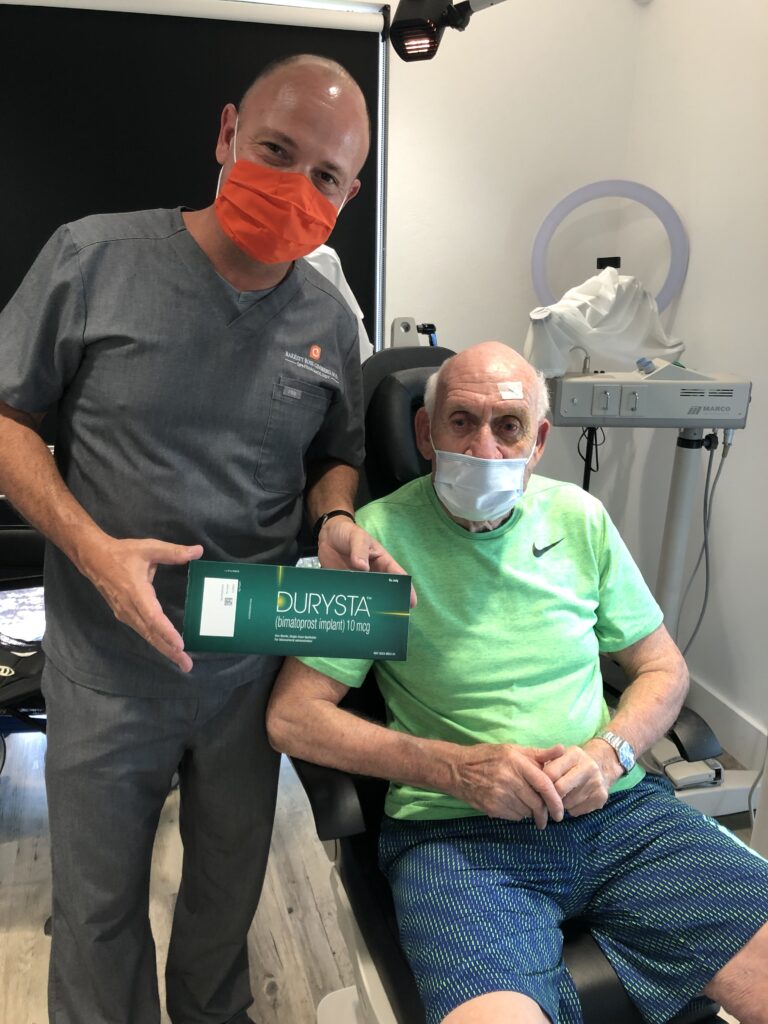How Does Durysta™ Work?

Were you recently diagnosed with glaucoma? Are you trying to figure out what treatment options could work for you?
Glaucoma is an eye condition that can lead to permanent blindness if it’s left untreated. The goal of treating glaucoma is to keep it from progressing and to save your remaining vision.
It is crucial to treat glaucoma once diagnosed because it causes damage to the optic nerve. Any damage to the optic nerve is irreversible.
Damage to the optic nerve occurs due to increases in intraocular pressure, which could result in vision loss or blindness if left untreated.
When treating glaucoma, the goal is to lower intraocular pressure, usually by using eye drops. The problem with eye drops is that many patients do not use them correctly or as directed. Some patients may use them and find that their intraocular pressure doesn’t lower.
For these patients, Ginsberg Eye is happy to announce that we now offer a new treatment option called Durysta. Durysta is the first biodegradable sustained-release implant.
This implant works because it decreases the intraocular pressure in patients with ocular hypertension or open-angle glaucoma. Keep reading to learn more about Durysta and how it works!
What is Durysta and How Does it Work?
Durysta is a biodegradable sustained-release implant for glaucoma patients with open-angle glaucoma or ocular hypertension. Durysta is implanted into the eye to help reduce and maintain a healthy eye pressure level.
The implant is rod-shaped and implanted into the eye, where it settles into the inferior angle. It reduces eye pressure through sustained release of bimatoprost for several months.
The placement in the anterior chamber angle allows for the closest location to the tissues of the trabecular meshwork and the uveoscleral routes. This is ideal because this location can deliver the bimatoprost non-stop for several months.
How Long Does Durysta Last?
The implant is designed to last four to six months. Most patients continue to have controlled intraocular pressure levels after Durysta has broken down. This means you’ll continue to benefit from Durysta.
Is Durysta a Good Option for Me?
If you have tried other treatments for glaucoma, including eye drops and they did not work, contact Ginsberg Eye about Durysta. Eye drops are not always the best option for every patient, and Durysta may be a better solution.
If you have glaucoma, it’s important to keep your eye pressure under control. If you’ve found eye drops challenging or you can’t use them as prescribed, Durysta may be right for you.
Do you want to talk about glaucoma treatment options? Schedule an appointment at Ginsberg Eye in Naples, FL with one of our providers to see how we can help!





